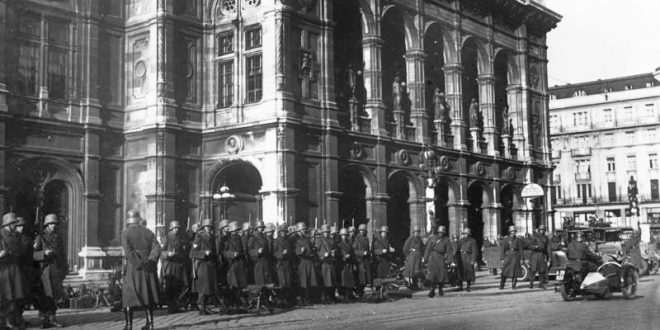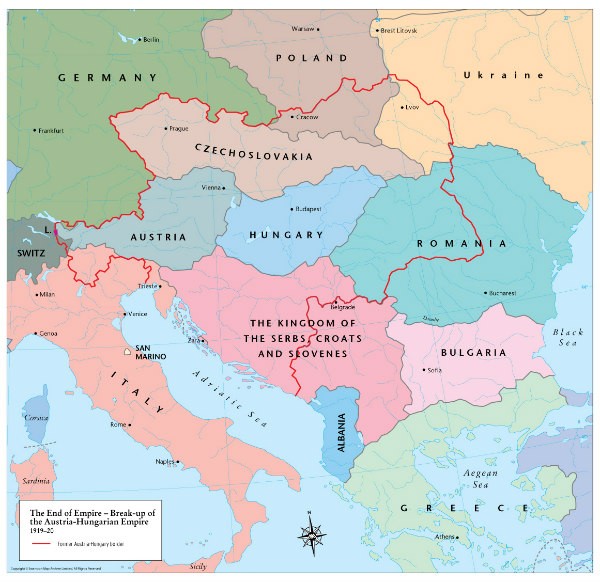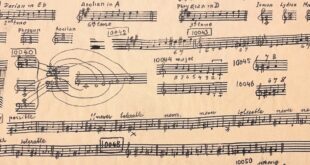Austria after World War I. What happened during Austria’s First Republic in Vienna? How did Vienna adapt after the Habsburg Empire broke up? Most dramatically, Austria shrank in size and importance from an Imperial capital to a small republic. To orientate yourself when visiting Vienna, read this 5 minute overview of the making of the republic of Austria.
Since my Austrian grandmother used to tell me stories about her life during the war, I have added her favorite war song below.
The Fall Of The Habsburg Empire
Austria after World War I. The 12th November 1918 marked the first day of republican Austria. For the first time in more than 650 years, we lived without the Habsburg rule.
In this map you can see the dramatic breakup of the Empire and the resized Austrian territory.
Austria after World War I. After four years of World War I, Emperor Charles I abdicated from his powers and left Schönbrunn Palace. The new Republic of German Austria was proclaimed the day after. Karl Renner became the first chancellor. His famous quote reflects the shock of losing the large territories of the Austro-Hungarian Empire: ‘We have turned into a people without state over night.’
Because he refused to resign from his powers, Emperor Charles I was expelled from Austria. Only two years before, Charles had taken over the crown when his great uncle Francis Joseph died in the middle of the war in 1916. For some brilliant narrative on these historic events, read Austrian writer Stefan Zweig when he describes the departure of Charles and his family from Eckartsau castle near Vienna in his book The World Of Yesterday.
In exile, Charles’ first stop was Switzerland. After two failed attempts to win back the rule over Hungary, the ‘Entente’ finally exiled him on the Portuguese island of Madeira. In 1922, Charles died there at the age of 35.
Austria After World War I: The First Republic
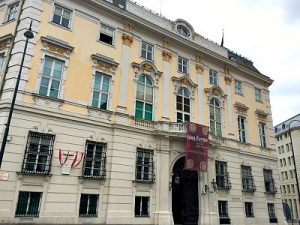 Austria after World War I. In 1918, the First World War ended with the collapse of the Austro-Hungarian Empire. After more than 650 years of Habsburg Empire, the former imperial city Vienna turned into the capital of a tiny political territory. After the Empire broke up, Austria shrank to around 40 percent of the size of the Empire.
Austria after World War I. In 1918, the First World War ended with the collapse of the Austro-Hungarian Empire. After more than 650 years of Habsburg Empire, the former imperial city Vienna turned into the capital of a tiny political territory. After the Empire broke up, Austria shrank to around 40 percent of the size of the Empire.
As one of the first administrative changes, the Federal Chancellery moved into the Court and State Chancellery (Hof- und Staatskanzlei). Since Empress Maria Theresia’s father Emperor Charles VI, the chancellery would have driven the Empire’s Foreign politics. Until today, this building (photo) next to Hofburg Imperial Palace is still used as the main office of the Austrian Federal Chancellor.
Vienna was often called the hydrocephalus (big head) because its former Imperial administration was huge. Civil servants in Vienna and the rest of Austria continued to enjoy much respect and admiration. Many of the older generation still love to wear their titles, such as Hofrat, Oberkommissaer or Ministerialrat. Having said that, it is still advisable to address an Austrian with his/her correct public or academic title.
Austrofascism And The Rise of the Nazi Movement
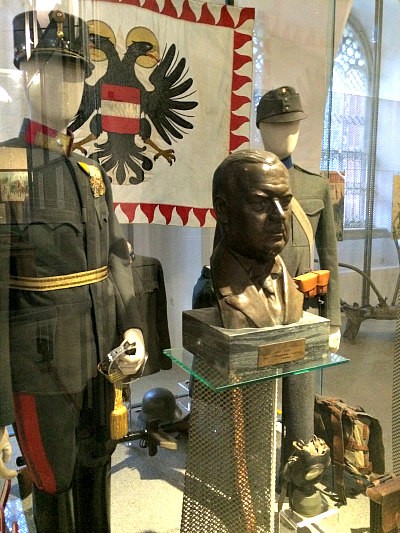 Austria after World War I. The left liberals gained political power in both Vienna and Budapest, pushing republican concepts and democracy.
Austria after World War I. The left liberals gained political power in both Vienna and Budapest, pushing republican concepts and democracy.
Between 12th and 15th February 1934, civil war broke out. On the one side, the left Sozialdemokratische Arbeiterpartei and the Republikanischer Schutzbund defended social and republican values. On the other side, the Corporate State (Standestaat) and the Heimwehr defended what is sometimes called Austrofascism. This photo from the Military History Museum in Vienna shows a bust of Engelbert Dollfuss.
In the end, Standestaat chancellors Engelbert Dollfuss and Kurt Schuschnigg defeated the social democrat movement. From outside Austria, Italian dictator Benito Mussolini supported the formation of the Corporate State in May 1934.
In her novel All That Lingers half Viennese Irene Wittig lets her readers experience Vienna’s tumultuous years from Austria’s 1934 civil war, through World War II and postwar occupation, to independence as three lives intertwine, bringing these events to life. At the core of the novel lie Irene’s memories of her Viennese family.
If you would like to dig deeper into this crucial period in Austrian history regime read the essays of The Dollfuss/Schuschnigg Era in Austria: A Reassessment, by renown Austrian political scientist Anton Pelinka.
In the months and years after the Corporate State had formed, the National Socialist Movement from Germany found fertile ground in Austrian politics to spread their ideas. Not least because Adolf Hitler himself was Austrian and had spent a couple of years in Vienna.
As a consequence, Austrian intellectuals such as writers, journalists, publishers, film makers and theatre directors, felt the heat. Increasingly they came under pressure to align their works with the ideals of National Socialism. If they expressed contradicting views the Corporate State penalised them. Not only did they lose business and money as a consequence, but they were blacklisted in Germany, too.
Apart from critical intellectuals, the Jewish population in Austria faced much the same oppression. Like Sigmund Freud, many of them escaped to London, Paris or the United States.
My Grandmother’s War Song
Austria after World War I. Since my grandmother, born in 1899, used to tell me stories about the War, I’m going to share some impressions with you. She often told me how lucky she and her family had been as they lived in the rural South of Vienna close to the Vienna Woods, and had enough to eat. In the larger cities like Vienna many people were starving. On the whole, the Austrians at that time lived on ration cards for bread and flour. For example, in 1918 they were allowed 40g of fat per person per week!
She would often sing the war song Ich hatt’ einen Kameraden… to me, using her mouth organ:
In battle he was my comrade,
None better I have had.
The drum called us to fight,
He always on my right,
|: In step, through good and bad. 😐
Explore more milestones of Vienna History
planning a really insightful trip to Vienna? find out how I can help you in Vienna Travel Planning
go back to Vienna Unwrapped homepage
